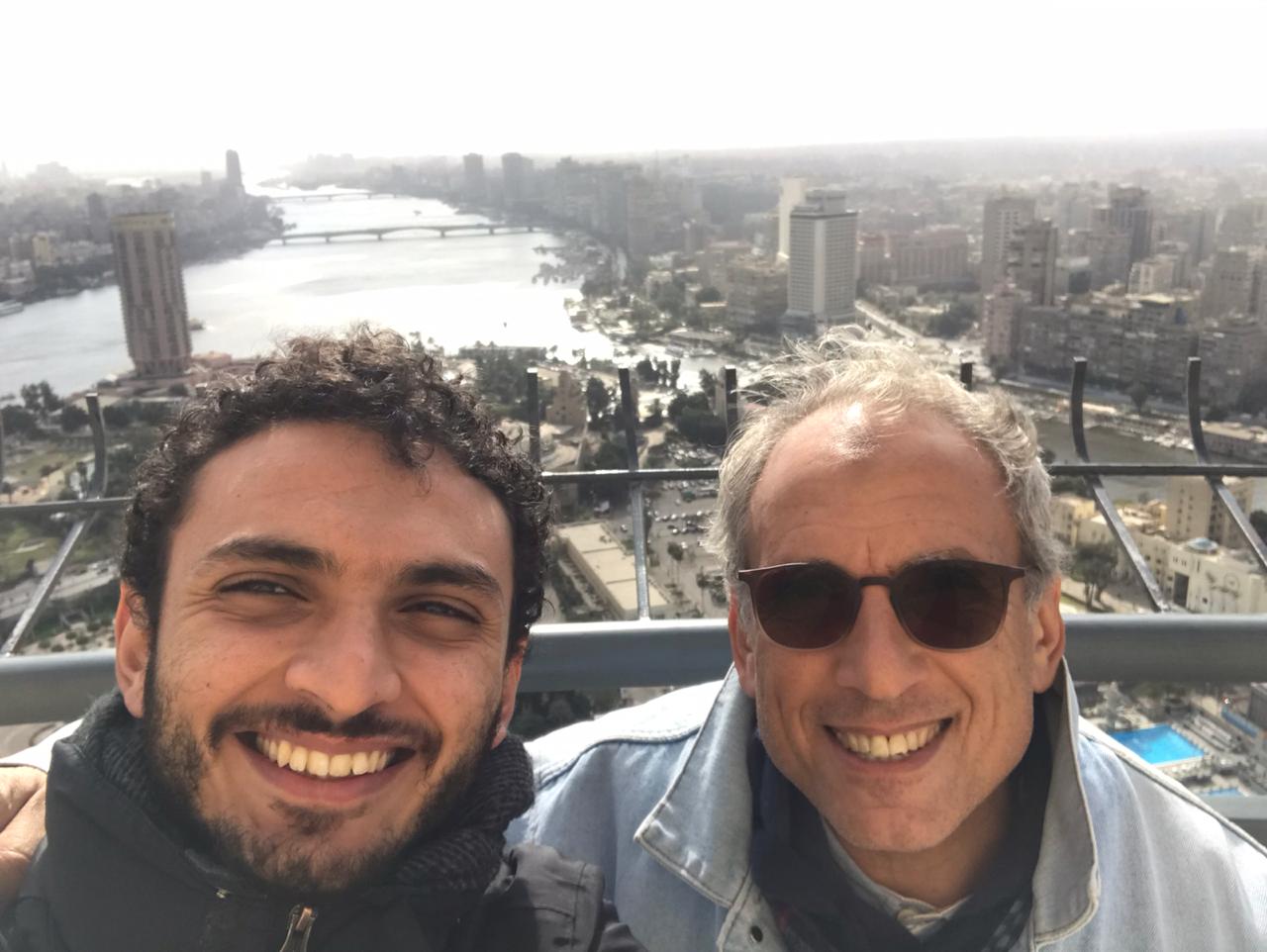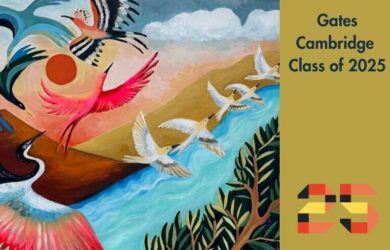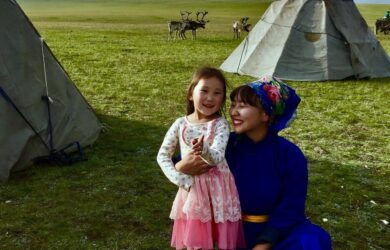
Ibrahim Abdou on his research which aims to understand the different reasons for Cairo's housing vacancy problem.
My main objective is to understand rather than jump to policy recommendations.
Ibrahim Abdou
When he was a child, Ibrahim Abdou’s father would tell him nostalgic stories about Egypt. The family had moved to Riyadh, where Ibrahim was born, for his father’s work as a civil engineer, but travelled back to Egypt for long summer holidays. Ibrahim loved that time of year, seeing members of his extended family in different places and going to the beach. “It was like paradise,” he says. “I developed a fascination with Egypt from a distance, especially Cairo. I grew up around stories of Cairo and I developed a story of the city in my mind.”
That fascination with Cairo led him back to the city for his undergraduate studies and the clash between dream and reality has been a driving force for his research work as he has sought to understand its different neighbourhoods and see how architecture can fulfil not only a design purpose but a social and political one.
For his PhD, supervised by Dr Nicholas Simcik Arese, Ibrahim [2019] is trying to understand why there are so many empty houses in Cairo – almost a third of the city’s housing units lie empty – when so many people are struggling to access housing or live in poor conditions. Ibrahim wants to move beyond simple reasons and is looking in depth at four neighbourhoods with high levels of vacant housing, each representing a different pattern. “It’s a completely different story in each,” he says. One is in a suburban middle class neighbourhood on the outskirts of the city where people are building their own villas and where his interest is in the emotional investment in buildings.
“There, creating a dream villa is a familial project, where one generation saves up to provide for their children,” he says. “The villa is central to culturally-informed ideas of marriage and home. It’s the placeholder for the family’s dreams. So, often, people would not rent out these properties and a purely economic approach is insufficient to understand why this happens.” He says understanding and tackling housing vacancy in such an area needs a more creative approach that cannot be separated from the affective meanings and cultural imaginations tied to those empty homes.
“My main objective is to understand rather than jump to policy recommendations,” says Ibrahim.
Childhood influences
His childhood experiences didn’t just fuel a fascination with Egypt. From an early age Ibrahim would spend a lot of time on the construction sites where his father worked. He found it fascinating seeing how building projects happen. “I would be a silent observer in offices and on sites and was able to see the different sides of how a project is built,” he says. He was also heavily influenced by his mother, a chemical engineer by training, but who later taught Ibrahim and his brother computer science and worked briefly for Apple before becoming a stay at home mother.
Ibrahim’s mind was also opened to different cultures and perspectives through the international schools he attended where he was a very conscientious student. In fact, he was teased by his family for being a straight A ‘teacher’s pet’ and did well in all his academic subjects. Outside of school he enjoyed drawing. His notebooks and diary were full of sketches.
It was his family’s ‘grand plan’ to return home and study in Egypt, especially as it was harder to be an international student in Saudi Arabia at a university level and, given his fascination for the country, Ibrahim was happy to comply. He applied to the German University in Cairo to study Architecture.
Ibrahim was 16, two years younger than his peers, when he started his undergraduate studies, having started school a year early and jumped a year in secondary school. That meant he didn’t feel rushed, he says, and was able to take academic detours. “I had time on my side,” he says.
He says that when he moved to Cairo it came as a bit of a shock after he had dreamt about it for so long. The pace, chaos, paradoxes and contradictions of the city were both fascinating and very tiring. He felt like an outsider. He wanted to understand how it worked. To get to university, he had to take a one and a half hour journey through the city, passing through starkly different neighbourhoods, and that gave him time to reflect and fuelled his research interests.
Discovery and beyond
His first years were focused on learning fundamental design skills, but he describes his third year as a “moment of discovery” when he realised the overlap between architecture and meeting people’s social needs. This began with a third-year design studio modelling a real life project. Ibrahim studied plans to redevelop a complex neighbourhood in the centre of Cairo which had both historical and economic value as well as a community of marginalised residents who were facing eviction. The ownership of land was also difficult to untangle. Students were asked to propose a small project, focusing on a particular aspect of the development brief. Ibrahim was interested in the strategic urban scale of the brief, looking at how to provide something for all the different interest groups and how to keep the community in place rather than purely concentrating on building aesthetics.
Ibrahim got a job as an intern on an innovative on-ground participatory development project in the same area through his third-year work. When he joined it was nearing its end point and the work involved urban mapping, conducting focus groups and mediating between the local community and officials. The project was supported by several officials, culminating in an international competition to accomplish its priorities. However, although inspiring at first, these plans later shifted with economic priorities, giving way to a more commercial redevelopment that involved entirely demolishing and rebuilding the area.
After his fourth year at university, he took a year out to work as an intern in two different offices in Germany, one in Munich working on several competitions including the design of museums and schools. After finishing his undergraduate degree, Ibrahim had to do military service, which gave him the time to explore the kind of architecture he was interested in. He started making videos linking up different topics relating to the city. The following year he worked as a teaching assistant while doing his master’s dissertation which explored how private money can fund the kind of infrastructure that is useful to a city, for instance, transportation.
Cambridge
Ibrahim then applied to do an MPhil at Cambridge, after contacting his supervisor Dr Felipe Hernandez. He was keen to explore in more depth his interest in how social and political issues overlap with architecture. Ibrahim won funding from the Cambridge Trust for his master’s and says it was a huge learning experience for him. “It taught me so much more than I had learned at any other stage of my life before that,” he says. “It was personally transformative more than academically transformative. It felt like an internal journey.”
During his MPhil he applied to do a PhD in Architecture, funded by a Gates Cambridge Scholarship, and began his research in 2019. Some of his fieldwork has been slightly delayed by the Covid-19 pandemic, but it has not been a major hindrance. Ibrahim says Gates Cambridge has provided him with the support he needs and has taken the pressure off him. “It’s like an additional bubble of support,” he says.
*Picture: Ibrahim and his father.












